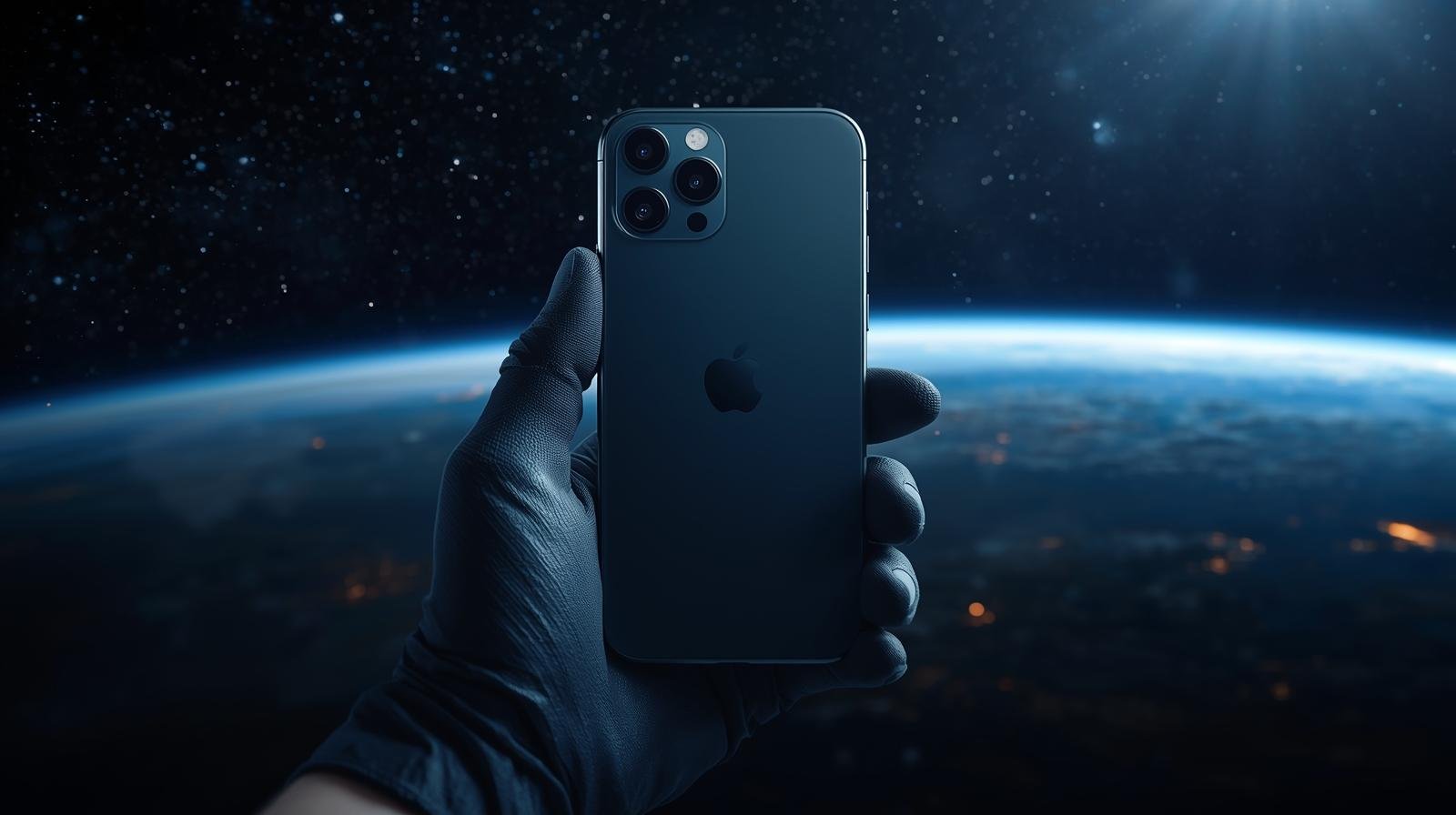Category
Popular Articles
- AI (12)
- Android (38)
- App Suggest (4)
- Apple (15)
- Apple TV (2)
- Bluetooth (3)
- Cars (2)
- ChatGpt (1)
- Chrome (2)
- Did you know? (1)
- E-Commerce News (1)
- Ecommerce Websites business (7)
- Electronics Shopping (5)
- Fashion Tips (3)
- Gaming (4)
- Google Gemini (3)
- Hair Care Tips (2)
- How to (13)
- iCloud (1)
- Infotainment System (1)
- Iphone (101)
- Job Posting (1)
- Lifestyle (3)
- Mac (20)
- Mobile Games (1)
- Netflix (1)
- Online Shopping Websites (2)
- Personal Finance Management (3)
- Product Reviews (3)
- Roku TV (4)
- Samsung (9)
- Shopping Tips (10)
- Spotify (1)
- Tech (93)
- Windows 11 (19)
- Zero Waste (3)
Discounted Products
-
 Leo Creation 144 TC Cotton Double Jaipuri Prints Flat Bedsheet(Pack of 1, Blue, Gree, Red, Grey, Light Grey)
Leo Creation 144 TC Cotton Double Jaipuri Prints Flat Bedsheet(Pack of 1, Blue, Gree, Red, Grey, Light Grey)
₹2,999.00Original price was: ₹2,999.00.₹329.00Current price is: ₹329.00. -
 Home Garage 210 TC Cotton King Floral Fitted (Elastic) Bedsheet(Pack of 1, Grey)
Home Garage 210 TC Cotton King Floral Fitted (Elastic) Bedsheet(Pack of 1, Grey)
₹999.00Original price was: ₹999.00.₹299.00Current price is: ₹299.00. -
 Goodrik 140 TC Cotton Double 3D Printed Flat Bedsheet(Pack of 1, Brown)
Goodrik 140 TC Cotton Double 3D Printed Flat Bedsheet(Pack of 1, Brown)
₹499.00Original price was: ₹499.00.₹229.00Current price is: ₹229.00. -
 GLOBALSHOP 350 TC Microfiber Double Floral Flat Bedsheet(Pack of 1, Multicolor)
GLOBALSHOP 350 TC Microfiber Double Floral Flat Bedsheet(Pack of 1, Multicolor)
₹1,250.00Original price was: ₹1,250.00.₹263.00Current price is: ₹263.00. -
 RisingStar 250 TC Microfiber King Printed Fitted (Elastic) Bedsheet(Pack of 1, FITTED-ROUND-CIRCLES-PREMIUM)
RisingStar 250 TC Microfiber King Printed Fitted (Elastic) Bedsheet(Pack of 1, FITTED-ROUND-CIRCLES-PREMIUM)
₹2,299.00Original price was: ₹2,299.00.₹299.00Current price is: ₹299.00. -
 Home Garage 210 TC Cotton King Floral Fitted (Elastic) Bedsheet(Pack of 1, Fitted Black Green)
Home Garage 210 TC Cotton King Floral Fitted (Elastic) Bedsheet(Pack of 1, Fitted Black Green)
₹1,299.00Original price was: ₹1,299.00.₹299.00Current price is: ₹299.00. -
 Home Garage 180 TC Cotton King 3D Printed Flat Bedsheet(Pack of 1, White)
Home Garage 180 TC Cotton King 3D Printed Flat Bedsheet(Pack of 1, White)
₹999.00Original price was: ₹999.00.₹229.00Current price is: ₹229.00. -
 Home Sizzler 153 cm (5 ft) Polyester Room Darkening Window Curtain (Pack Of 2)(Floral, Maroon)
Home Sizzler 153 cm (5 ft) Polyester Room Darkening Window Curtain (Pack Of 2)(Floral, Maroon)
₹799.00Original price was: ₹799.00.₹299.00Current price is: ₹299.00. -
 Panipat Textile Hub 152.4 cm (5 ft) Polyester Window Curtain (Pack Of 2)(Solid, Aqua)
Panipat Textile Hub 152.4 cm (5 ft) Polyester Window Curtain (Pack Of 2)(Solid, Aqua)
₹1,899.00Original price was: ₹1,899.00.₹299.00Current price is: ₹299.00. -
 Home Sizzler 214 cm (7 ft) Polyester Semi Transparent Door Curtain (Pack Of 2)(Floral, Maroon)
Home Sizzler 214 cm (7 ft) Polyester Semi Transparent Door Curtain (Pack Of 2)(Floral, Maroon)
₹1,199.00Original price was: ₹1,199.00.₹399.00Current price is: ₹399.00. -
 Home Sizzler 153 cm (5 ft) Polyester Room Darkening Window Curtain (Pack Of 2)(Floral, Brown)
Home Sizzler 153 cm (5 ft) Polyester Room Darkening Window Curtain (Pack Of 2)(Floral, Brown)
₹799.00Original price was: ₹799.00.₹299.00Current price is: ₹299.00. -
 Stella Creations 214 cm (7 ft) Polyester Room Darkening Door Curtain (Pack Of 2)(Abstract, Brown)
Stella Creations 214 cm (7 ft) Polyester Room Darkening Door Curtain (Pack Of 2)(Abstract, Brown)
₹1,299.00Original price was: ₹1,299.00.₹449.00Current price is: ₹449.00. -
 Homefab India 152.5 cm (5 ft) Polyester Room Darkening Window Curtain (Pack Of 2)(Floral, Light Blue)
Homefab India 152.5 cm (5 ft) Polyester Room Darkening Window Curtain (Pack Of 2)(Floral, Light Blue)
₹1,199.00Original price was: ₹1,199.00.₹319.00Current price is: ₹319.00. -
 Urban Home 214 cm (7 ft) PVC Transparent Door Curtain Single Curtain(Solid, Off White)
Urban Home 214 cm (7 ft) PVC Transparent Door Curtain Single Curtain(Solid, Off White)
₹699.00Original price was: ₹699.00.₹203.00Current price is: ₹203.00. -
 Panipat Textile Hub 213 cm (7 ft) Polyester Door Curtain (Pack Of 2)(Solid, Brown)
Panipat Textile Hub 213 cm (7 ft) Polyester Door Curtain (Pack Of 2)(Solid, Brown)
₹1,199.00Original price was: ₹1,199.00.₹349.00Current price is: ₹349.00.
Affiliate Links
Promotion

By Jessica – Tech Blogger from the USA
Hey friends, I’m Jessica! 👋 I was watching a space documentary last weekend (yes, total NASA nerd here!), and something funny popped into my head — would an iPhone actually work in space? Like, if an astronaut took an iPhone 15 Pro Max to the International Space Station and tried to take a selfie or call home, would it even function?
It sounds like a silly question, but it’s actually a fascinating one. Let’s break this down step by step — from how iPhones work on Earth to what happens when they’re exposed to the unique environment of space.
🚀 1. How iPhones Work Here on Earth
Before we send our iPhone off to the stars, let’s remind ourselves how it works in everyday life:
- Power: iPhones use lithium-ion batteries, which rely on chemical reactions that work best at moderate temperatures (roughly 32°F to 95°F).
- Signals: They connect to cellular networks via radio waves that depend on nearby cell towers.
- Sensors: iPhones rely on gravity for orientation (thanks to the accelerometer and gyroscope).
- Protection: They’re designed to handle everyday conditions like rain or dust, not extreme radiation or zero gravity.
On Earth, all of this functions perfectly because Apple builds its devices for the environment we live in — not outer space.
🛰️ 2. The Harsh Reality of Space
Now imagine your iPhone floating outside Earth’s atmosphere. Space isn’t just a pretty backdrop for photos; it’s a deadly environment for most electronics. Here’s why:
- Extreme temperatures: Space can swing from -250°F in shadow to +250°F in sunlight.
- No air: There’s no atmosphere, which means no cooling for electronics.
- Radiation: The Sun’s radiation in space is much higher, and it can fry electronic circuits.
- Zero gravity: No gravity means no proper heat dissipation, no stable orientation for sensors, and possible malfunction in liquid-based components like batteries.
So, if you just floated your iPhone outside the ISS without protection, it would likely freeze, overheat, or short-circuit within seconds.
📶 3. What Happens to the iPhone’s Network in Space
Here’s the big question: could you call or text from space?
The short answer is no — at least, not using a normal cellular signal.
- No cell towers: Cellular networks work via towers on Earth, and those signals don’t reach space.
- No SIM service: Even if you had roaming enabled, your carrier can’t connect beyond the Earth’s ionosphere.
That said, astronauts do communicate with Earth — but they use satellite-based communication systems, not phones. NASA’s systems link to satellites like TDRS (Tracking and Data Relay Satellites), which send data and voice signals back to mission control.
If your iPhone were connected to a Wi-Fi network on the ISS (which exists!), it could technically send iMessages, FaceTime calls, or emails — as long as the Wi-Fi is routed through NASA’s communication network.
So inside the ISS, yes, you could use some iPhone features — but outside, nope.
⚡ 4. How iPhone Batteries React in Space
This one’s crucial. iPhone batteries use a chemical reaction that needs stable pressure and temperature.
In space:
- Without pressure, the liquid electrolytes inside could evaporate or expand, damaging the battery.
- Extreme cold slows the reaction, reducing capacity or causing shutdown.
- Intense heat can make the battery swell, leak, or explode.
That’s why every electronic device in space missions (including NASA’s tablets and cameras) undergoes radiation shielding and vacuum testing. Regular consumer gadgets aren’t built for that.
🧤 5. Could You Even Use the Touchscreen in Space?
Even if somehow your iPhone survived, using it would be another challenge!
- Gloves: Astronauts wear thick gloves, and touchscreens need direct skin contact or capacitive stylus input.
- Pressure: The lack of air pressure could cause the screen to malfunction or crack.
- Dust and radiation: The particles in space could interfere with the touchscreen sensors.
So practically speaking, astronauts wouldn’t be able to swipe or type easily unless they removed their gloves — which, well, would be instant death. So let’s not do that! 😅
📷 6. Can You Take Photos in Space With an iPhone?
Here’s the cool part — yes, kind of!
Astronauts have actually taken iPhones and iPads to the ISS before. For example:
- NASA’s “SpaceLab for iOS” project used iPhones for experiments in 2011.
- Astronauts have taken photos and videos from inside the ISS using iPads and iPhones.
However, these devices are used inside the station — where temperature, pressure, and radiation are controlled. Outside the station, an unprotected iPhone would last only moments before failing.
Still, inside the ISS, iPhones can take incredible Earth photos through the station’s windows.
🛰️ 7. Could a Modified iPhone Survive Space?
NASA and SpaceX sometimes modify consumer devices to make them space-ready. This might include:
- Adding radiation shielding
- Enclosing it in a pressurized casing
- Using special cooling mechanisms
In theory, if Apple designed a “Space Edition iPhone,” it could function in space with some modifications. After all, iPhones already work on commercial flights, high-altitude balloons, and even near-space experiments (up to 100,000 feet before the atmosphere gets too thin).
But a stock iPhone from your Apple Store? Not a chance.
🌕 8. What Happens if You Drop an iPhone in Space?
Here’s a fun thought experiment: what if you let your iPhone go during a spacewalk?
- It won’t fall down. There’s no gravity pulling it toward Earth right away — it would simply float next to you.
- It will orbit Earth. If you let go too hard, it could drift away into orbit and become space junk.
- Eventually, it will burn up. After months or years, it would slowly lose altitude and re-enter Earth’s atmosphere — turning into a tiny meteor!
So yes, your iPhone could literally burn up shooting across the sky. Dramatic, right?
🌐 9. Could Future iPhones Be Used in Space?
Apple hasn’t designed iPhones for space (yet), but the company is edging closer with features like:
- Satellite connectivity (Emergency SOS): Introduced in iPhone 14, this feature lets users connect to satellites when no cellular network is available — a huge step toward space-ready tech.
- Improved durability: The iPhone 15 Pro’s titanium frame and ceramic shield can handle more extreme conditions.
- Power efficiency: Longer battery life makes them more suited for challenging environments.
So maybe in the future, we’ll see an “iPhone Space Mode.” Who knows — SpaceX and Apple might just make it happen.
💡 10. Final Verdict: Would an iPhone Work in Space?
Here’s the breakdown:
| Feature | Inside ISS | Outside in Space |
|---|---|---|
| Calls & Internet | ✅ via Wi-Fi | ❌ No signal |
| Battery | ✅ Stable | ❌ Fails quickly |
| Touchscreen | ✅ Works normally | ❌ Malfunctions |
| Camera | ✅ Works great | ❌ Overheats/freezes |
| Survival Time | Months/years | Seconds/minutes |
So yes, an iPhone can work in space — but only inside the International Space Station, where conditions are Earth-like. Outside, it wouldn’t last long.
Jessica’s Takeaway
Space is a beautiful but brutal environment, and even the smartest smartphone on Earth isn’t ready for it — yet. Still, I find it amazing that iPhones have made it aboard the ISS for real experiments!
So next time you take a photo of the night sky, remember — your iPhone might not survive in space, but it sure helps you explore the stars from Earth.
Written by Bazaronweb
Latest Tech Articles
- Steps to Enable Emergency Restart in Windows 11

- 3 Easy Ways to Find Your Laptop Serial Number

- 5 Ways to Backup and Restore Registry Settings in Windows

- iMessage Not Syncing Between iPhone & Mac? 8 Proven Ways to Fix Account & Device Issues

- Outlook Not Receiving Emails? 8 Proven Fixes for Windows, Mac & Mobile

Products
-
![Apple Watch Ultra 3 [GPS + Cellular 49mm] Running & Multisport Smartwatch w/Rugged Titanium Case w/Black Titanium Milanese Loop - M. Satellite Communications, Advanced Health & Fitness Tracking](https://bazaronweb.com/retailstores/wp-content/uploads/2025/09/apple-watch-320x320.jpg) Apple Watch Ultra 3 [GPS + Cellular 49mm] Running & Multisport Smartwatch w/Rugged Titanium Case w/Black Titanium Milanese Loop - M. Satellite Communications, Advanced Health & Fitness Tracking
Apple Watch Ultra 3 [GPS + Cellular 49mm] Running & Multisport Smartwatch w/Rugged Titanium Case w/Black Titanium Milanese Loop - M. Satellite Communications, Advanced Health & Fitness Tracking
-
 Apple iPad mini (A17 Pro): Apple Intelligence, 8.3-inch Liquid Retina Display, 256GB, Wi-Fi 6E, 12MP Front/12MP Back Camera, Touch ID, All-Day Battery Life — Purple
Apple iPad mini (A17 Pro): Apple Intelligence, 8.3-inch Liquid Retina Display, 256GB, Wi-Fi 6E, 12MP Front/12MP Back Camera, Touch ID, All-Day Battery Life — Purple
-
 Apple AirPods Max Wireless Over-Ear Headphones, Active Noise Cancelling, Transparency Mode, Personalized Spatial Audio, Dolby Atmos, Bluetooth Headphones for iPhone – Space Gray
Apple AirPods Max Wireless Over-Ear Headphones, Active Noise Cancelling, Transparency Mode, Personalized Spatial Audio, Dolby Atmos, Bluetooth Headphones for iPhone – Space Gray
-
 Apple AirPods Pro 2 Wireless Earbuds, Active Noise Cancellation, Hearing Aid Feature, Bluetooth Headphones, Transparency, Personalized Spatial Audio, High-Fidelity Sound, H2 Chip, USB-C Charging
Apple AirPods Pro 2 Wireless Earbuds, Active Noise Cancellation, Hearing Aid Feature, Bluetooth Headphones, Transparency, Personalized Spatial Audio, High-Fidelity Sound, H2 Chip, USB-C Charging
-
 Leo Creation 144 TC Cotton Double Jaipuri Prints Flat Bedsheet(Pack of 1, Blue, Gree, Red, Grey, Light Grey)
Leo Creation 144 TC Cotton Double Jaipuri Prints Flat Bedsheet(Pack of 1, Blue, Gree, Red, Grey, Light Grey)
₹2,999.00Original price was: ₹2,999.00.₹329.00Current price is: ₹329.00.
Leave a Reply